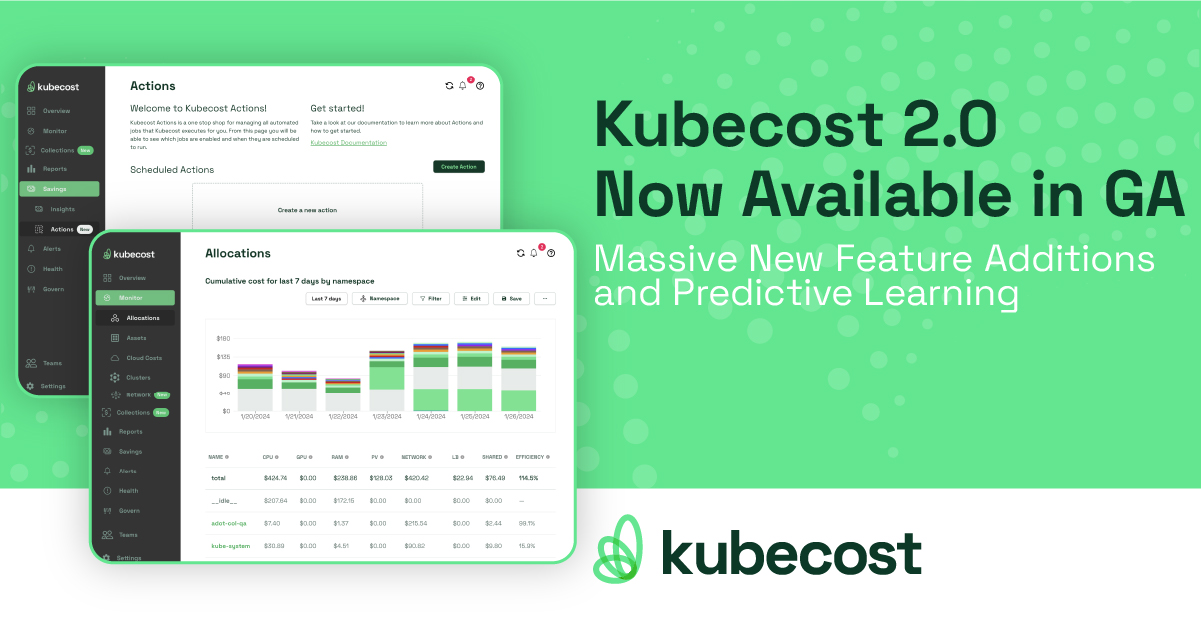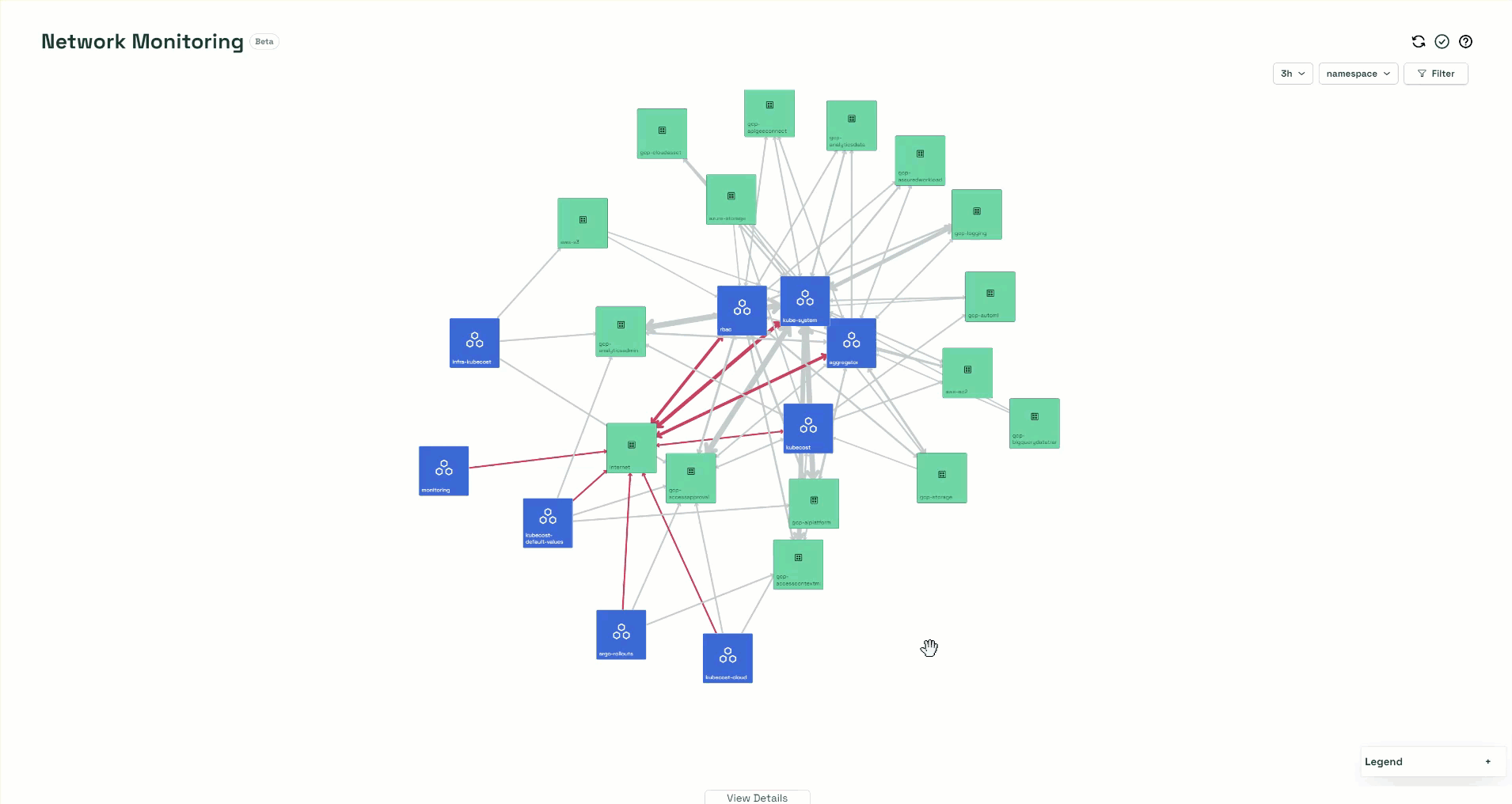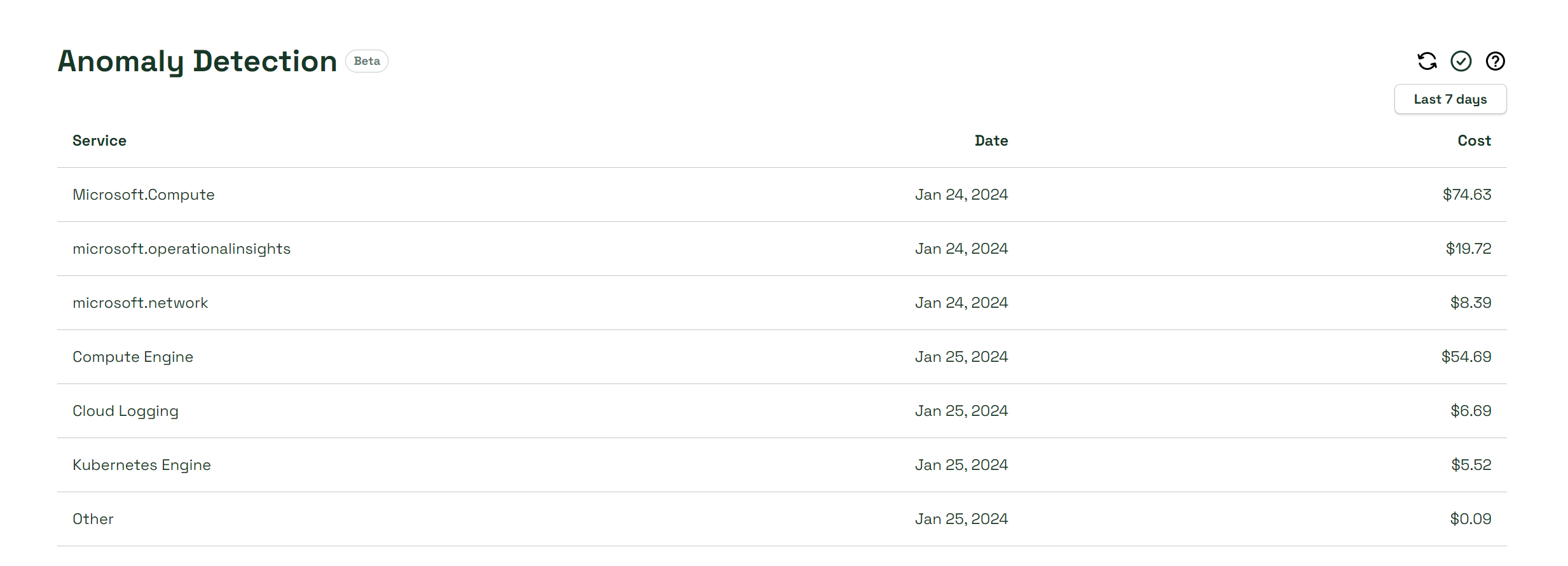Introducing Kubecost 2.0

Today we’re proudly announcing the launch of Kubecost 2.0. It’s available for free to all users and can be accessed in seconds. Our most radical release yet—we’re shipping more than a dozen major new features and an entirely new API backend. Let’s delve into key features and enhancements that make Kubecost 2.0 the best Kubernetes cost management solution available.
Here’s an overview of all the great new functionality you can find in Kubecost 2.0:
Network Monitoring visualizes all traffic costs

Kubecost’s Network Monitoring provides full visibility into Kubernetes and cloud network costs. By monitoring the cost of pods, namespaces, clusters, and cloud services, you can quickly determine where in your infrastructure is driving spend in near real-time. Interacting with this feature, you can discover more about the sources of your inbound and outbound traffic costs, drag and drop icons, or hone in on specific traffic routes. This functionality is especially helpful for larger organizations or teams hoping to learn more about their complex network costs. Learn more in our Network Monitoring doc.
Collections combines Kubernetes and cloud costs

The new Collections page lets you create custom spend categories comprised of both Kubernetes and cloud costs while removing any overlapping or duplicate costs. This is especially helpful for teams with complex and multi-faceted cost sources that don’t wish to relabel their costs in the cloud or Kubecost. Additionally, aggregating and filtering ensure you only see the costs you want to see and nothing else. Read more in our Collections doc.
Kubecost Actions

Kubecost Actions provides users with automated workflows to optimize Kubernetes costs. It’s available today with three core actions: dynamic request sizing, cluster turndown, and namespace turndown. We’ve made it easier to create your schedules and get the most out of our offered savings functionality. Learn more in our Actions doc.
Forecast spend with machine learning

New machine learning-based forecasting models leverage historical Kubernetes and cloud data to provide accurate predictions, allowing teams to anticipate cost fluctuations and allocate resources efficiently. You can access forecasting through Kubecost’s major monitoring dashboards Allocations, Assets, and the Cloud Cost Explorer by selecting from any future date ranges. You will then see projected future costs along with your realized spend. Learn about forecasting here.
Anomaly Detection

Anomaly Detection takes cost forecasting a step beyond by allowing you to detect when actual spend deviates from spend predicted by Kubecost. You can quickly identify unexpected spend across key areas and address overages quickly where appropriate. Allowing users to ensure their cloud or Kubernetes spend does not exceed expectations significantly.
Read more in our Anomaly Detection doc.
100x performance improvement at scale
Kubecost 2.0 introduces a major upgrade with a new API backend, delivering a massive 100x performance improvement at scale, coupled with a 3x enhancement in resource efficiency. This means teams can now experience significantly faster and more responsive interactions with both Kubecost APIs and UI, especially when dealing with large-scale Kubernetes environments. The ability to query 3+ years of historical data provides engineering and FinOps teams with a comprehensive view of resource utilization trends, enabling more informed decision-making and long-term trend analysis.
Installing Kubecost
You can upgrade to Kubecost 2.0 in seconds, and it’s free to install! Head to our Installation Page and start visualizing your Kubernetes costs and identify optimizations.
Next Steps
This is only a preview of the key features now available with Kubecost 2.0. Check out our full release notes to read about all the great features available in self-managed Kubecost. Other notable features in this release include real-time cost learning, teams access management, monitoring shared GPUs, and more.
Want to see Kubecost 2.0 in action? Join our Kubecost 2.0 webinar on Thursday, February 15th at 1 PM ET (10 AM PT) where we will be doing a deep-dive on the new functionality to show you how you can empower your team with granular, actionable insights for efficient Kubernetes operations.
You can also learn more about how Kubecost can help you monitor and reduce your Kubernetes and cloud costs by visiting our website or reaching out to team@kubecost.com with any questions!